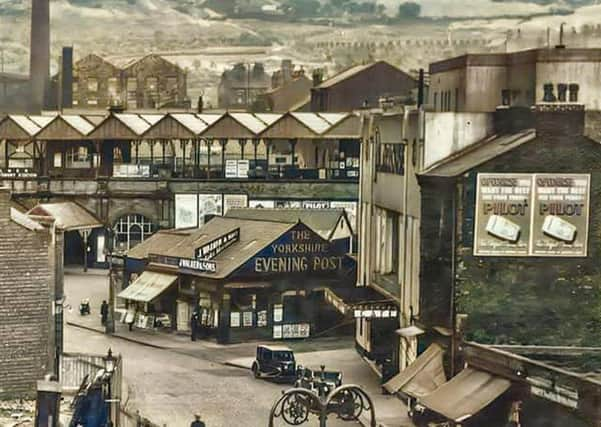The Nostalgia column with Margaret Watson: Remember these landmarks in this great picture?


People who remember the old Dewsbury will recognise this scene and immediately see three important changes which have taken place over the years.
It was taken in 1931 long before the Central Railway Station was closed by Dr Beecham.
Advertisement
Hide AdAdvertisement
Hide AdReaders will also recognise the Playhouse Cinema on the right-hand side which was demolished to make way for Wilkinson’s, or should I say “Wilkos”?


This is the kind of photograph I can sit looking at for ages because it brings back so many memories, especially of the Playhouse Cinema.
On the left-hand side you can see a demolition site where old-fashioned shops had been pulled down to make way for Broadway House, which was completed in 1932.
Much of the top floor of this building was occupied by Pearson and Moody’s coal merchant, known simply as P&M.
Advertisement
Hide AdAdvertisement
Hide AdThe large frontage was originally Weaver to Wearer’s men’s outfitters, whose first manager was Geoffrey Hartley, uncle of local historian Stuart Hartley.
I remember the Yorkshire Electricity showrooms being there for many years when people were turning from gas appliances to electricity.
When this picture was taken, the Playhouse Cinema, which had cost £60,000 to build, had just been opened by the independent Lou Morris chain. It was built on the former site of James Austin Steelworks, which had moved to their new forge in Thornhill Lees in 1927.
The Playhouse was built as a theatre and cinema, and the first film shown was Charlie Chaplin’s ‘City Lights’.
Advertisement
Hide AdAdvertisement
Hide AdBut only three years later, it was to be taken over by the Associated British Cinemas (ABC) chain which was renamed ABC in 1963.
I think we all remember the famous ABC “Minors” on Saturday mornings when the cinema was opened for children only.
Sadly, The Playhouse was closed as a cinema on December 11, 1970, but continued to be used as a bingo hall for some years before being finally demolished.
In the background of this picture you can see the works and chimney of Silver’s Dry Cleaners.
Advertisement
Hide AdAdvertisement
Hide AdIn front is the huge first floor level glazed canopy over the Great Northern Railway Station, on the Bradford to Wakefield line, and ultimately to London.
Much of the daily produce for the market and local shops came into this station, as did the London daily newspapers, fresh fruit from Covent Garden and Fish from Aberdeen for Herman Pickles, fish game and fruit merchant on Foundry Street.
Herman use to smoke his herrings to make kippers in smoking sheds up the small ginnell leading up to the Baptist church, known then as Leeds Road Baptist Church.
You can see on the picture the Dewsbury offices of the Leeds based Yorkshire Evening Post which closed I believe in the 1950s.
Advertisement
Hide AdAdvertisement
Hide AdIt was later occupied by Sid Portman newsagent, who was followed by his son Stuart.
There was also a herbalist here for over a hundred years which continues today as Brimelow’s herbalist.
The Playhouse Cinema was hailed as one of the most palatial cinemas in the North of England.
It took six months to build with some 200 men, mostly local, being employed in creating this new landmark in the bosom of the old town.
Advertisement
Hide AdAdvertisement
Hide AdIt was capable of seating 2,000 in full-size comfortable, upholstered, tip-top seats with ample leg room and with each giving a clear uninterrupted view of the stage.
It had, of course, an organ, built by John Compton, the doyen of British organ builders, and capable of rendering every known sound.
There was also a cafe-restaurant, the kitchen of which was ultra modern and capable of serving a six-course meal if necessary.
There was also a large private dining room available for dinner parties, a pleasant way of entertaining friends, if you could afford it, and then straight into your reserved seats.
Advertisement
Hide AdAdvertisement
Hide AdWhen it was first opened, admission prices ranged from sixpence in the stalls to a few luxury seats in the front circle at two shillings.
I hope this article and photograph will evoke happy memories, and hopefully some readers will share them with us.
If you have memories of the Playhouse or Dewsbury town centre in the old days, please contact me.
Grateful thanks to Stuart Hartley for providing the photograph and some details of the buildings pictured.
Send your bygone memories of Dewsbury to [email protected] for a chance to see them featured in the paper.